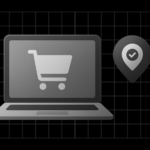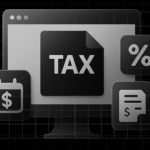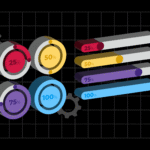Simplifying your business model is one of the smartest moves you can make as an entrepreneur.
A clear, focused business model helps you save time, reduce wasted effort, and accelerate growth. But many founders struggle to condense complex ideas into a practical plan.
That’s where the Lean Canvas Generator comes in. It gives you a simple, visual way to map your business idea, focus on what truly matters, and communicate effectively with your team and stakeholders.
In this guide, we’ll show you how to streamline your business model step by step using the Lean Canvas. We’ll include tips, real-world examples, FAQs, and best practices to make this process smooth and actionable.
Why Simplifying Your Business Model Matters
A complex business model can slow down decision-making, confuse stakeholders, and distract your team from what matters most. By simplifying, you can:
- Focus on the key problems your customers face
- Highlight the unique value you provide
- Optimize revenue streams and cost structures
- Test ideas faster and reduce risk
💬 How does Lean Canvas simplify a business model? Lean Canvas breaks your model into nine essential components, focusing on problems, solutions, customers, and metrics. This prevents overcomplication and speeds decision-making.
📊 Research also shows that startups using frameworks like Lean Canvas are more likely to find product-market fit quickly.
Lean Canvas Components Explained
The Lean Canvas breaks your business model into nine essential components. Here’s a quick reference table you can keep handy:
|
COMPONENT |
DESCRIPTION |
|
1. Problem |
Identify the top 1-3 problems your target customers face. Focus on the points you aim to solve. |
|
2. Customer Segments |
Define the specific groups of people or businesses your product or service will serve. |
|
3. Unique Value Propositions |
Clearly state the benefits of your product or service offers. Explain why customers should choose you over competitors. |
|
4. Solution |
Outline the key features or services that address the problems you’ve identified. |
|
5. Channels |
Describe how you’ll reach your customers, including marketing, distribution, and communication methods. |
|
6. Revenue |
Identify how your business will earn money (e.g., product sales, subscriptions, advertisements). |
|
7. Cost Structure |
List your primary costs: production, marketing, staffing, and operations. |
|
8. Key Metrics |
Highlight your business’s measurable indicators of success (e.g., customer acquisition cost, churn rate, and monthly recurring revenue). |
|
9. Unfair Advantage |
Define what sets your business apart and cannot be easily replicated by competitors (e.g., intellectual property, a strong brand, exclusive partnerships). |
💬 What is a Lean Canvas? A Lean Canvas is a one-page business model tool that helps entrepreneurs simplify and communicate their business ideas effectively. Check out what a lean canvas is for more details.
💡 For a deeper dive, check out our article Lean Canvas vs Business Model Canvas.
Step-by-Step: How to Use the Lean Canvas Generator
Step 1: Fill in Your Lean Canvas
Start by specifying your company’s sector, like e-commerce, healthcare, or technology. Then:
- Describe your business and products/services
- List 1–3 core problems you’re solving
- Define your unique advantages (patents, partnerships, special skills)
- Identify channels to reach customers
💡 Tip: Focus on the problem you’re truly solving. Misidentifying it can waste time and resources.
💬 Can I update my Lean Canvas as my business grows? Absolutely. It’s meant to evolve with your business. Update it regularly with customer feedback and new insights.
Step 2: Adjust Canvas Settings
Customize your canvas to fit your style and clarity needs:
- Title Decoration – Make it bold or underlined
- Character Limits – Keep sections concise
- Font Size & Alignment – Improve readability
- Canvas Shape & Colors – Make it visually appealing
Step 3: Review & Finalize
Preview your canvas using the Load PDF Preview. Once satisfied, download it as a PDF for printing, sharing, or pitching to investors.
💡 Tip: Ask a team member to review your canvas; fresh eyes often spot gaps or improvements.
Step 4: Apply & Iterate
Your Lean Canvas is a living document. Use it to:
- Update as your business evolves
- Discuss strategy with your team
- Pitch your idea to investors or partners
Best Practices & Common Pitfalls
- Keep it concise – Avoid cluttering with too many details
- Test assumptions early – Validate problems, solutions, and metrics
- Involve your team – Collaboration leads to better insights
- Prioritize key metrics – Focus on what really drives success
Pitfalls to avoid:
- Ignoring customer feedback
- Overcomplicating the canvas
- Neglecting updates as the business changes
💡 Tip: Visuals like diagrams and charts can help communicate complex ideas quickly. Also, please read our article on the five best case management software.
Real-World Example
Imagine a startup connecting dog walkers with pet owners in urban areas:
- Problem: Pet owners struggle to find reliable dog walkers
- Solution: Mobile app matching owners with local walkers
- Unique Value Proposition: Verified walkers, real-time tracking, flexible scheduling
- Revenue: Subscription plans and commissions
By mapping this to the Lean Canvas, the founders quickly clarified their value proposition, revenue streams, and key metrics before building the product.
💬 Is Lean Canvas better than Business Model Canvas? Lean Canvas is designed for startups and fast iteration, while Business Model Canvas is broader and more traditional.
Take Control of Your Business Model
Simplifying your business model doesn’t mean cutting corners; it means focusing on what truly drives value. With the Microapp Lean Canvas Generator, you can create a clear, actionable plan in minutes.
By following this guide, using best practices, and testing your assumptions early, you’ll communicate more effectively with your team, attract investors, and accelerate growth.
Start simplifying your business model today and turn your ideas into reality.








